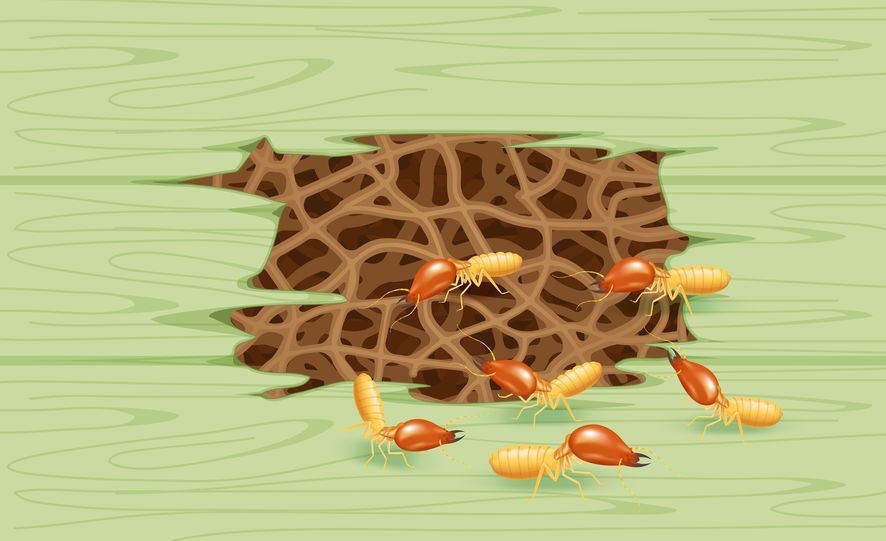Termites and carpenter ants are the two main wood destroying pests currently bothering homeowners in the US. Together they cause billions of dollars in damage each year, so it’s important to be familiar with them and understand how they differ. In this article, we’re going to cover just that.
Appearance
The only time you will see a termite outside of its colony is when you have swarmers flying around. Swarmers are the reproductive caste of any colony, and they have wings. Both termites and ants will spawn swarmers when the colony is old enough. To tell the two apart, you will have to look at them up close. Ant swarmers have a clearly segmented body, straight antennae, and one pair of wings longer than the other, while termite swarmers have a more “square” body, with bent antennae, and two pairs of wings that are the same size.
However, carpenter ants do leave their colony, and that is one of the main ways in which you can identify them. If you start to notice large, black or dark brown, ants scurrying around your property, then you may have a carpenter ant infestation. A carpenter ant worker will usually reach about half an inch in length, and it will have a large head and jaws.
Diet
We all know that termites eat wood, but carpenter ants do not. The ants are mainly interested in setting up a colony inside the wood, and they will venture out looking for sources of protein and sugar. However, ants and drywood termites do share the trait that they both build their colonies inside wood, while subterranean termites build their colonies underground and they only feed on the wood.
Damage
In terms of damage, drywood/dampwood termites and carpenter ants are on par. However, subterranean termites outdo all other species. Subterranean termite colonies can reach millions of members, so the damage that they can do during an infestation onsets rapidly. The other termite species and the carpenter ants will have to build their colonies up slowly over time, so that reduces the speed at which they do damage initially.
Control
When it comes to control methods, termites and carpenter ants could not be any different. The control method used has to be specific to the species responsible for the infestation. If you would like to know more about the control methods, or if you have a carpenter ant or termite infestation, contact us today and we will help you out.

